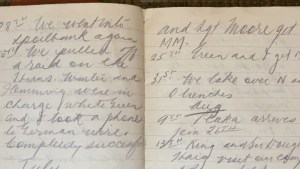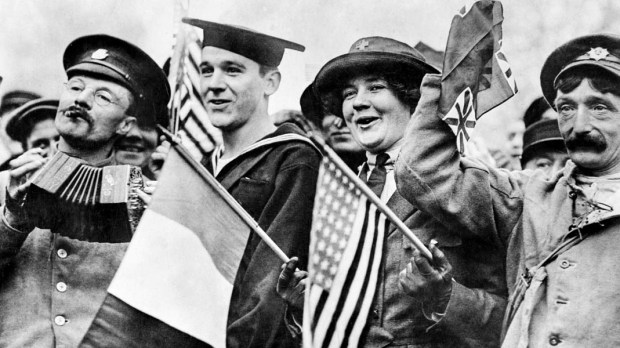Today we commemorate the 100th anniversary of the end of the First World War. After a four-year struggle that engulfed Europe in bloodshed on a scale never seen before, with poison gas, machine guns, and trenches that still scar the fields of France today, finally peace was brokered, and the guns went silent at 11:00 a.m. on November 11, 1918: the eleventh hour of the eleventh day of the eleventh month.
The day is still commemorated as Armistice Day in many countries, though in the United States it has come to be called Veterans Day, and is given to remember not just “the great war,” but all those who have served in the armed forces.
If you were to overlay a liturgical calendar on the secular calendar, you would find that Armistice Day is also the feast day of one of the most popular saints of the early Church, St. Martin of Tours. And if you were to read about St. Martin’s life, you would see how fitting and providential it is for this saint’s feast to come on a day that remembers the laying down of arms.
St. Martin of Tours was born in either 316 or 336 in Savaria, in modern-day Hungary. His father was a tribune in the Imperial Horse Guard in the Roman army, and the family moved to Italy when Martin was young. Though Christianity was at this point a legal religion in the Roman Empire, it was not very popular yet in the higher echelons of society; so when Martin at the age of 10 became a catechumen, his parents objected, though they did not prevent him.
At 15, Martin followed his father into the army and joined a heavy cavalry unit. He was stationed in Amiens in France where he had the experience for which he is best remembered. On a bitterly cold day, Martin saw a poor beggar with ragged clothes at the city gate. Martin cut his own cloak in half and gave half to the beggar. That night Martin had a dream that the beggar to whom he had given the cloak was Christ, who praised Martin’s act before the angels and saints.
As Martin grew stronger in his faith, and as a new emperor, Julian the Apostate, came to power in Rome, Martin no longer felt he could in good conscience serve in the army. He said, “I am a soldier of Christ,” and refused to fight on behalf of a pagan emperor. He was eventually released from military service.
Martin then sought to live the life of a hermit, studying under the tutelage of the great Doctor of the Church, St. Hilary of Poitiers. But Martin’s own sanctity soon became well-known, so that he was pulled away from his quiet life and pressed to found monasteries, and then, to become bishop of Tours. Martin did not want to be bishop and tried to hide from the acclaiming crowds, but was given away by a barn full of geese that drew attention to him by their honking. (Thus, St. Martin is often depicted in iconography accompanied by a goose — and roast goose is the traditional meal for his feast day.) He was consecrated bishop and served his diocese with great pastoral care.

Read more:
What are Doctors of the Church?
St. Martin had long been held as a special patron of soldiers. The half of his cloak from the famous story became of relic of the saint that was prized by the medieval Frankish kings and was carried into battle, accompanied by a priest. The priest in charge of the cloak (or cappa) was called the cappellanu, or in French, chapelain. Eventualy all priests who ministered to soldiers were called “chaplains.” Likewise, as the relic would travel, small temporary churches would be set up to house it. These were called “capella,” or in French, chapels. The unaccompanied chant sung for prayer in these chapels, which were too small to house an organ, became known as a capella singing.
Though he had always had a connection to soldiers, there is no indication from history that St. Martin’s day was chosen for the armistice for that reason. Yet God’s providence often brings things together seemingly by chance. In this case, the feast of the saintly soldier who laid down his arms to serve the Prince of Peace became the day that the bloodiest conflict in European history up to that point came to an end. The architects of the ceasefire may have liked the poetic quality of “the eleventh day of the eleventh month,” but in that, God provides us a deeper message.

Read more:
Found at sea: Navy chaplains help not only their flocks, but anyone searching

Read more:
Lost diaries of WWI Canadian soldier unearthed

